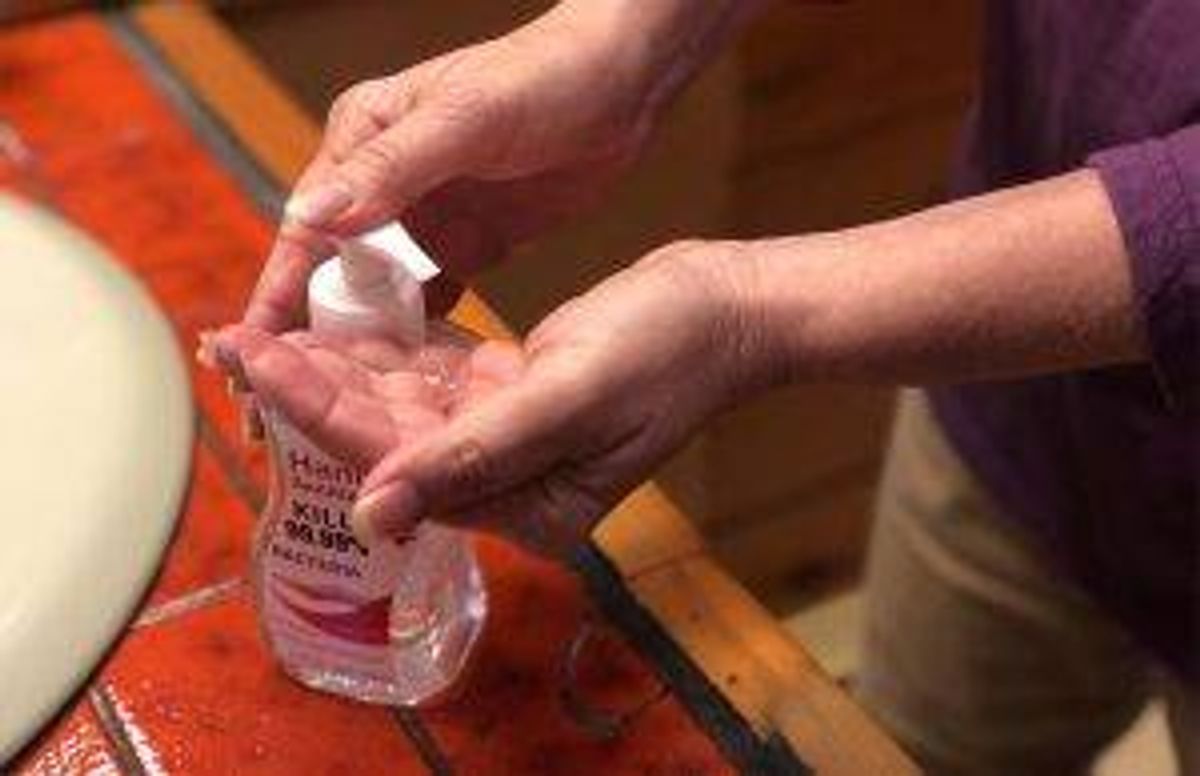Sanitizer Science: What Works and What to Avoid
Are all sanitizers created equal? Not quite.
It wasn’t that long ago during the pandemic that finding hand sanitizer in stores was a similarly hopeless quest to searching for toilet paper. But as supply chains caught up with demand, sanitizer now seems to be everywhere. Cases of them are stacked near the entrances at home improvement warehouse stores. Even the neighborhood hardware store has an assortment right next to the cash register, as hand sanitizer has become one of those last-minute grab items.

But are all sanitizers created equal? Not quite.
“Drying off” the sanitizer with a towel reduces its effectiveness.
The most common active ingredient is some form of alcohol: usually ethanol or isopropyl alcohol. There is a difference between the two.

Ethanol is simply grain alcohol, the same “active ingredient” that’s in your favorite single-malt scotch. You might see it labeled as “denatured” alcohol, a term that’s a little misleading. It refers to ethanol that’s had chemicals added to make it unfit for human consumption. This is required in products for external use, so people don’t try making cocktails out of it.
Isopropyl alcohol is rubbing alcohol. It’s also not drinkable, of course, but has some other properties that set it apart. It evaporates more quickly than ethanol but is also less dehydrating and thus, easier on your skin.
So why alcohol to begin with? Akrum Tamimi, a biosystems engineer at the University of Arizona, explains that bacteria and some virus cells (including coronavirus) are surrounded by a protein membrane, known as the “envelope.”
“Alcohol actually breaks that membrane,” says Tamimi, “and when it breaks the membrane, the insides of that cell — you know, the pathogen — just spills out and you inactivate that.”
Tamimi has written two research papers on the effectiveness of hand sanitizer.
Our Commitment to Covering the Coronavirus
We are committed to reliable reporting on the risks of the coronavirus and steps you can take to benefit you, your loved ones and others in your community. Read Next Avenue's Coronavirus Coverage.
You'll also want to know about the right way and wrong way to use alcohol-based sanitizers.
The Centers for Disease Control and Prevention (CDC) warns that you have to use an adequate dollop and rub it all over both hands until they’re dry, allowing the alcohol to evaporate in the process. “Drying off” the sanitizer with a towel reduces its effectiveness.

Read the Label, But…
Sadly, you can’t always trust a hand sanitizer's label.
Early shortages of commercial sanitizers triggered a kind of gold rush with companies scrambling to get fresh product onto store shelves and retailers desperate to find suppliers. The result was some sketchy, and even potentially harmful, goop got into (and onto) consumers’ hands.
In one notable case, a product from a Mexican firm, Harmonic Nature, was labeled to contain ethanol or isopropyl alcohol but on testing, turned out to be contaminated with a related chemical known as 1-propanol. Legitimate sanitizers contain 2-propanol, also known as isopropanol or isopropyl alcohol.
The Food and Drug Administration (FDA) warns that 1-propanol “is not an acceptable ingredient for hand sanitizer products marketed in the United States and can be toxic and life-threatening when ingested.” (It’s not a good idea to drink sanitizer under any circumstances, of course.)
That’s the tricky part about chemistry: one small number can make a big difference.
Whether sanitizers are homemade or store-bought, health authorities emphasize that they’re not a perfect substitute for washing hands with soap and water.
Sanitizers have also been found to contain methanol, another form of alcohol that is highly toxic in even small amounts, and can do damage even absorbed through the skin. During Prohibition, it’s estimated that tens of thousands of people died or were blinded from drinking bootleg whiskey made with methyl-or “wood alcohol.”
The FDA has published a list of products to avoid, updated as new contaminants are reported. The agency says it has also issued import alerts “to stop these products from legally entering the U.S. market.”
Even some popular brands of hand sanitizer might engage in a bit of hyperbole with their claims.
In January, the FDA issued a warning to the makers of the nearly ubiquitous Purell hand sanitizer to tone down its claim that the product is “more than 99.99%” effective against certain pathogens, for lack of peer-reviewed research supporting the statement.
The DIY Solution
At the height of the Great Sanitizer Shortage, recipes began circulating online for making your own, using either rubbing alcohol or hydrogen peroxide as the active ingredient.
Commercial brands typically contain 65%-70% alcohol, but the FDA says anything between 60% and 90% will work. (The World Health Organization takes a more stringent stance, recommending the final product contain 75% isopropyl alcohol.)
One problem you might encounter is mixing the two ingredients.
If you take the simplest approach of blending rubbing alcohol with, say aloe vera gel, you might find that the two want to separate in the bottle. The blend might do the job, but needs to be shaken up each time before dispensing.
Off-the-shelf hand sanitizers might contain other additives lacking in home recipes such as glycerin as a moisturizer or triethanolamine, a pH balancer found in various skin products.

Tamimi, who has studied alcohol’s disinfecting properties extensively, cautions that mixing products is a tricky proposition, since it’s hard to tell how the ingredients will react with one another. Instead, he recommends doing as he does: spraying a straight 70% alcohol product directly on your hands, then following with a hand cream if the alcohol dries out your hands.
Whether sanitizers are homemade or store-bought, health authorities emphasize that they’re not a perfect substitute for washing hands with soap and water. Sanitizers use chemicals to deactivate the virus, which may not be 100% effective.
Soap and water remove the virus from your hands. “It’s attaching itself to the oil and the dirt that’s on the hands,” explains Tamimi. “When you wash your hands with soap, it just removes everything. You want to actually wash it away.”
The standard recommendation is to scrub down for at least 20 seconds, so we might as well get used to singing “Happy Birthday” to ourselves — twice.

Read More

